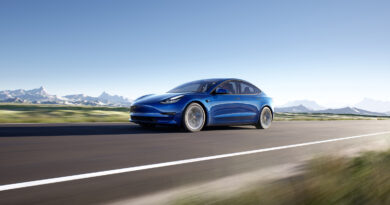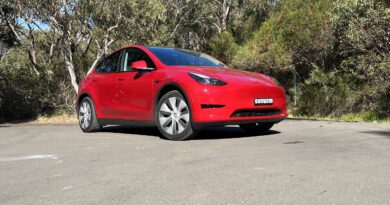2025 Polestar 5 review: First taste of Sweden’s super electric vehicle
The Polestar 5 will be car like no other from the young, EV-only brand. Today’s Polestar 2, as well as the Polestar 3 and 4 arriving in Australia next year, are all closely related to models made by Volvo and Geely. Not the Polestar 5…
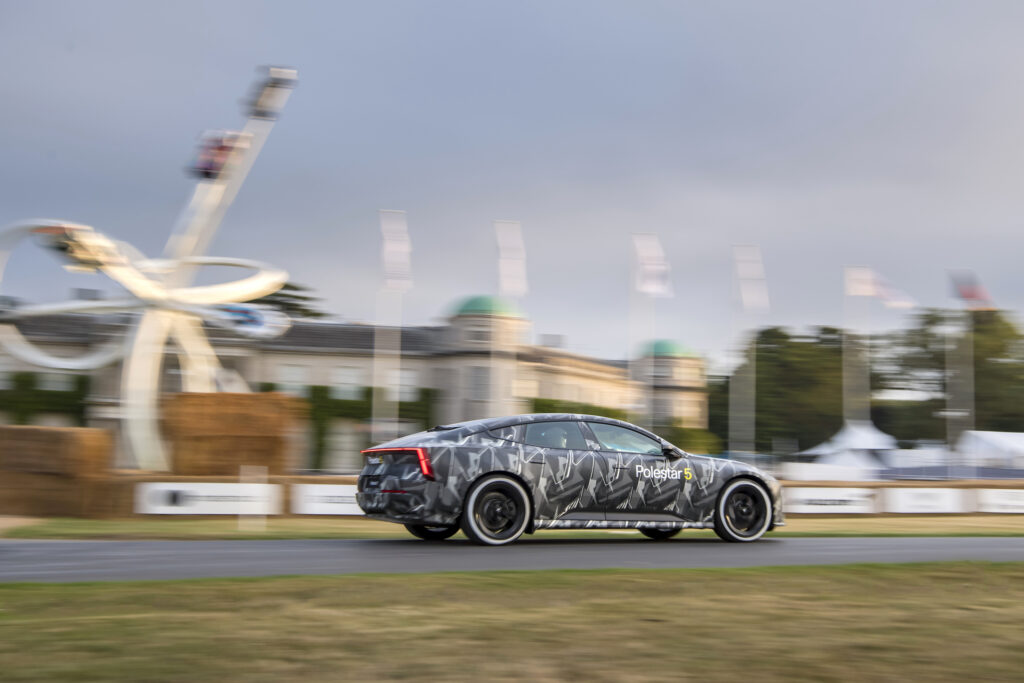
This long, low and large four-door coupe, due to go into production in 2024, is all Polestar’s work. It’s a clean-sheet design that aims to elevate Polestar’s image. The 5 will top the line-up, so it will lift the brand’s price ceiling too.
Before we get into the details, here’s a quick recap of the Polestar story…
From racers to EVs
It begins in the 1990s, when Polestar was the name chosen by a Swedish constructor of Volvo-based race cars. Volvo bought Polestar in 2015, and for a time used the name on high-performance ICE- and hybrid-powered variants.
Volvo had been bought from Ford by big Chinese car maker Geely in 2010. In 2017 Geely and Volvo announced Polestar would be spun off as a stand-alone brand focused on EVs.
Polestar’s first EV, the Polestar 2 hatchback, was revealed in 2019 and went into production in 2020. It shares all its core tech with the Volvo XC40 and C40 EVs.
The Polestar 2 arrived in Australia early in 2022, and quickly became one of the best-selling EVs in the country behind the Tesla Model 3 and, later, the Model Y.
Early next year the Polestar 3, a sleek, five-seat SUV, will join the 2. It’s built on the same platform as the new Volvo EX90. Within months it will be joined by another sporty SUV, the smaller Polestar 4. It’s built on a Geely-developed platform.
In contrast, the technical foundation beneath the aerodynamic skin of the 5 is all Polestar’s work. And it’s rather impressive.

Getting familiar with the 5
EV Central spent an afternoon at Polestar’s UK development facility getting familiar with the 5. Based within the MIRA proving ground in the Midlands, the company’s team there has grown from around 50 in 2018 to more than 500 today.
They’ve been working on the Polestar 5 since 2019. Some of them were hired from Formula 1 teams, others previously worked for car makers from BMW-owned Mini to VW Group-owned Bentley, or major automotive component suppliers.
The UK team is responsible for development of the car’s body structure and chassis. Another team, based in Sweden, is working on the 5’s electric drivetrains, user-experience tech and software development.
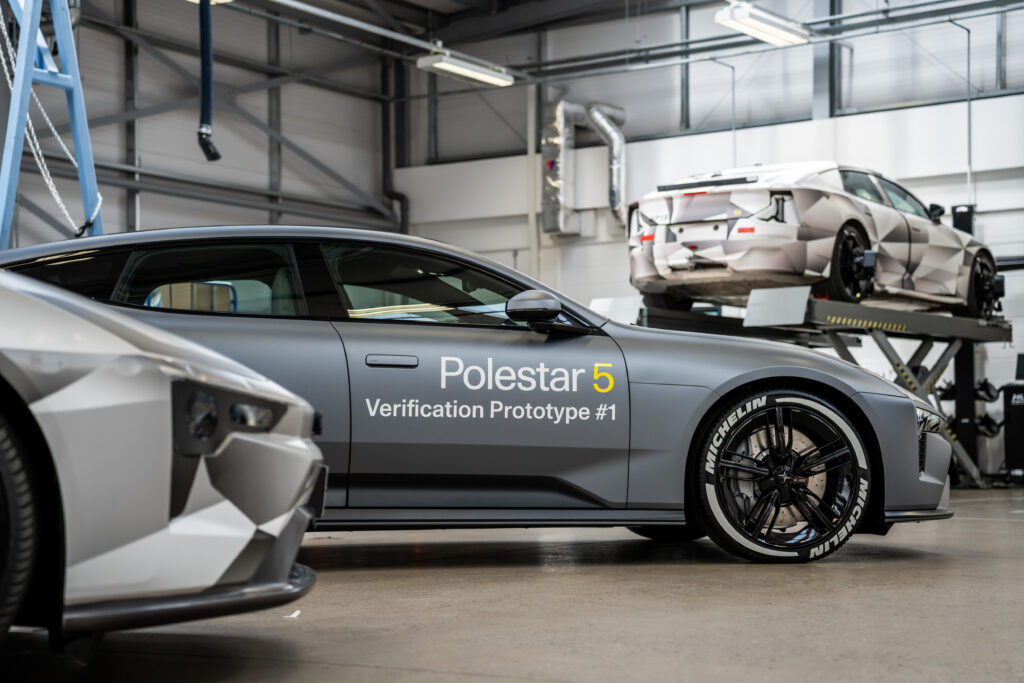
The body of the Polestar 5 is made from bonded aluminium pressings, castings and extrusions. To speed the setting of the adhesives that literally glue the car together the assembled bodies will be baked in an oven.
Polestar engineers say the bonded construction delivers greater stiffness than other methods, like spot-welding and riveting.
A full-length glass roof will be a standard feature of the Polestar 5. So strong is the bonded aluminium body that no crossmember is needed to join the body’s B pillars. This means there’s nothing in the way of the big sheet of curved glass above the seats.
The interior is very spacious, too. Especially in the rear seats. This isn’t just a happy coincidence, it’s smart engineering.

The Polestar 5’s slim 800-volt lithium-ion battery pack has cut-outs to make space for rear passengers’ feet, similar to the Porsche Taycan. Expect the pack to have a usable capacity of around 100kWh, and a driving range of more than 600km.
Because the 5 has a boot instead of a hatchback, there’s no need for a crossmember to support hinges right above the rear seat. This benefits headroom, which is ample.
The Polestar 5’s chassis is a gimmick-free zone, explains head of vehicle engineering Steve Swift as he walks EVC around prototypes in the company’s MIRA workshop.
Sound basic design means it doesn’t need costly extras, like air suspension, fancy adaptive shock absorbers or rear-wheel steering to disguise the consequences of compromises.
A ride with dynamics engineer Chris Baguley around one of MIRA’s handling tracks shows Swift and his team clearly know what they’re doing.
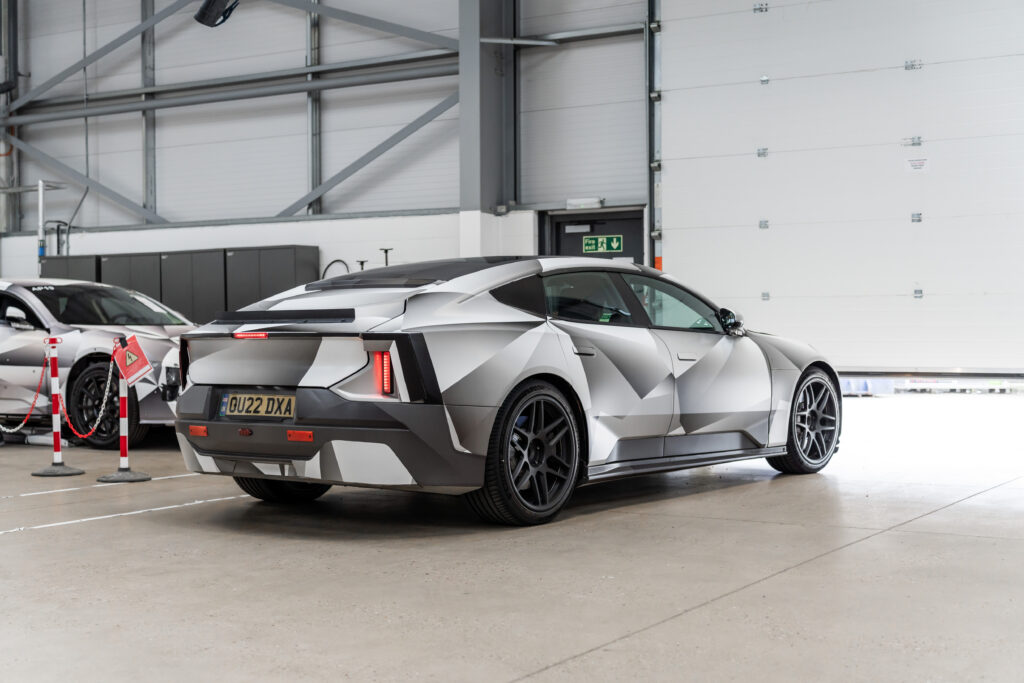
This particular prototype has a single motor driving its rear wheels. Polestar isn’t ready to discuss its output at present, but when Baguley pins the accelerator pedal it feels like 400kW to 450kW is at work. It’s very quick, but there will also be a dual-motor Polestar 5 that will be quicker still.
Polestar aims to make the 5 a performance and handling rival for Porsche models like the brilliant Taycan EV and the Panamera. But what Baguley does with the Polestar 5 prototype feels more like one of the great ICE-powered, rear-drive M cars from BMW. Minus the noise, naturally.
There’s great grip from the front end, and the rear can be made to slide sideways with fluid grace and complete control whenever Baguley wants. From the passenger seat the Polestar 5 certainly feels like a car that will thrill keen drivers.
Though the MIRA track isn’t nearly as bumpy as an Australian rural backroad, it’s far from perfectly smooth. The suspension handles these British bumps with soothing smoothness.

It’ll be Precept-like, inside and out
More car buyers are attracted by delightful design than subtle suspension or heroic handling. Even though most of the prototypes at MIRA were camo-clad and had incomplete interiors, it’s obvious that the production Polestar 5 will be very similar to the Precept Concept car that previewed it back in 2020.
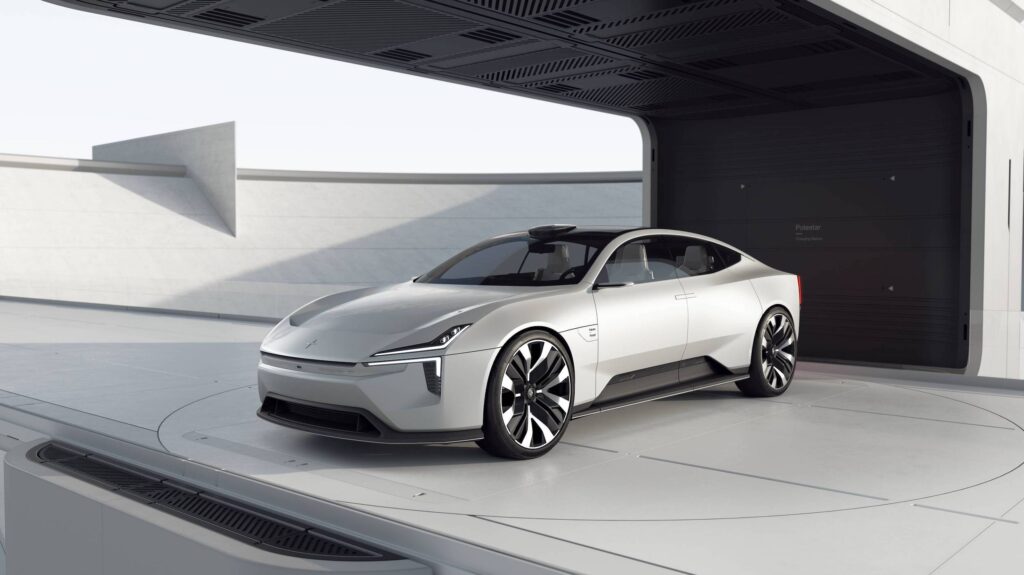

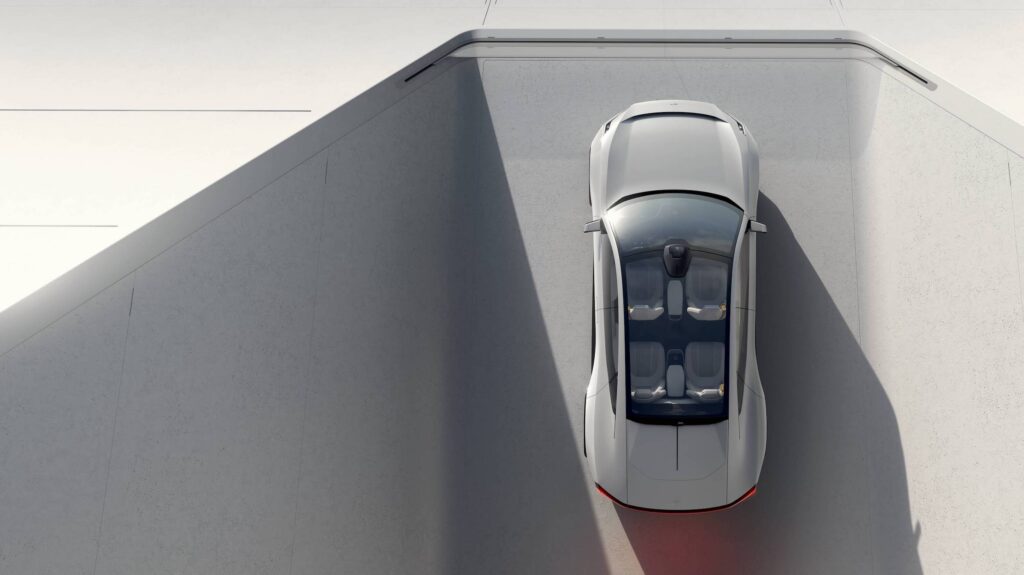
In other words, it’ll be a very good looking big car; curvily muscular, beautifully proportioned and deftly detailed.
Price position at present unknown
The Polestar 5 will be positioned above the Polestar 3, which will be priced from $133,000 for the Long Range Dual Motor launch version.How much more than this Polestar will ask for the 5 is pure guesswork at the moment. The $150,000 to $200,000 zone looks reasonable when roughly equivalent models in the current Taycan line-up are considered. However, like other Polestars, the 5 will be manufactured in China, where production costs are lower than Germany. Will prices reflect this, or not?
Bottomline? For those who will be able to afford it, this is an EV worth waiting for.

